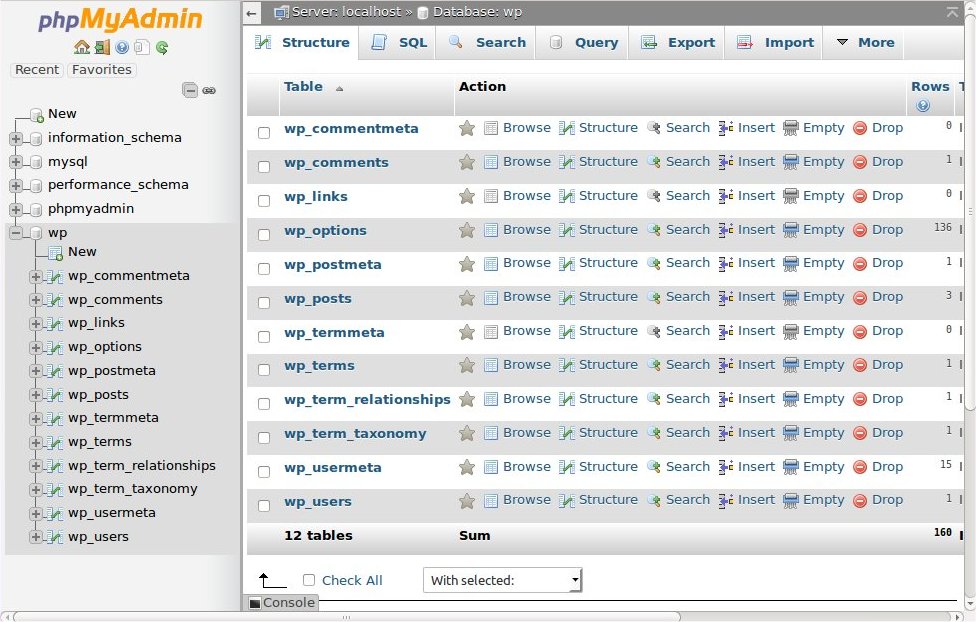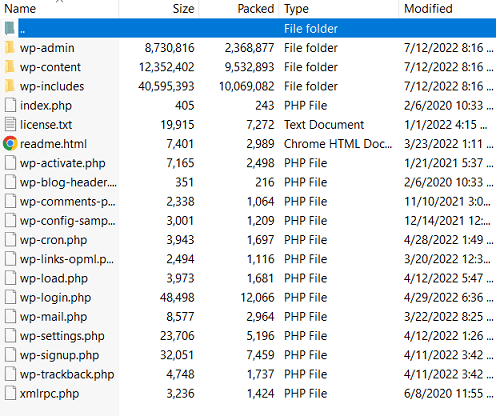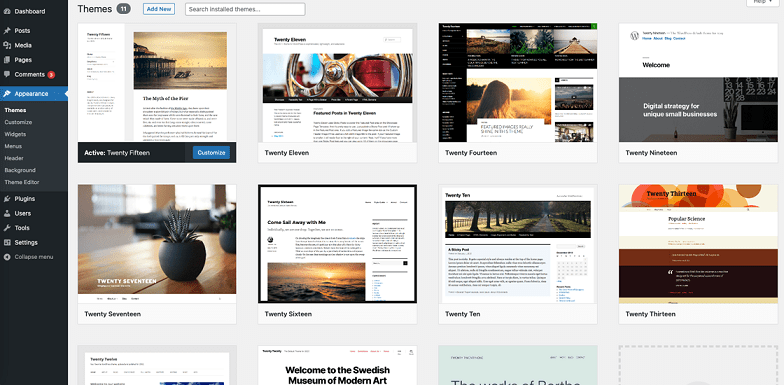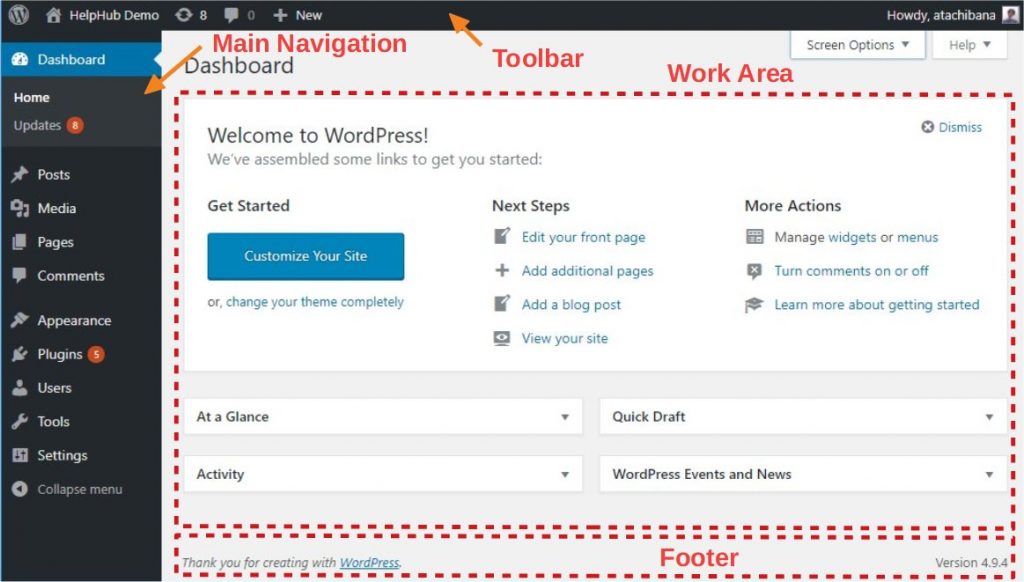If you are new to web development or you are looking for new options to build your next website, then it is likely you have encountered WordPress in your search.
However, you may be a little in the dark about how WordPress works and what benefits it has over other website builders.
In this guide, we will provide a run-through of the platform’s main components, hosting options, and its key features such as themes and plugins, answering the question ‘how does WordPress work?’
What Are the Main Components of WordPress?
WordPress comprises four main components that create the backbone of the platform, helping people create amazing websites, from personal blogs to E-Commerce stores.
These four key components are the database, the WordPress core, add-ons such as themes and plugins, and the admin dashboard.
Below is a brief summary of each of these components.
1. WordPress Database
In order for your WordPress website to work, you will need a database to store the vast amounts of information and settings.
A WordPress database is made up of 12 tables and each of these tables relates to a different element, including posts, metadata, and taxonomies.
WordPress Database, Described in the phpMyAdmin cPanel

Fortunately, WordPress manages the database so you don’t have to automatically save any changes and update as required.
Attempting to edit the database yourself could result in you breaking your website, something that can be very difficult to fix, even for an experienced developer.
⚡ Check also ➡️ What Programming Language Does WordPress Use?
2. WordPress Core
As well as the database, the WordPress core is also a vital component when it comes to delivering your WordPress website. This group of files contains the code that lays the overall foundation of the platform.
These files are saved on the server when WordPress is installed. The platform can be installed in two ways:
1. You can download the files directly from WordPress.org and then manually upload them to your server.
WordPress Core Files

2. You can choose the easier option of using the auto-installer tool that is available on your hosting provider’s control panel.
3. WordPress Themes and PlugIns (Add-On Files)
Add-on files such as themes and plugins are used to modify and customize your site to ensure it meets your and your user’s requirements.
Installing these extra files means you can change the design of your website and add extra functionality.
Using the admin dashboard, you can automatically install and manage these files. Your themes, plugins, and various uploads will be stored in your wp-content folder.
⚡ Check also ➡️ WordPress Themes vs WordPress Plugins: What’s the Difference?
WP Themes
Theme files control how your website will look and how the content will be displayed to your audience.
In most cases, only one theme is needed to manage the appearance of your website, using a stylesheet to build a template for your content.
For advanced users, a second theme can also be installed, known as a Child Theme. This Child Theme allows you to make modifications to your website without altering the parent (original) theme, so any edits you make won’t be discarded when the theme updates.
There are many themes available, both free and premium ones, so it is important to choose one that is perfectly suited to your website’s style and purpose, ensuring it matches your brand and is suitable for your content.
Themes can also be customized in the Appearance section of the admin dashboard and are stored in the wp-content/themes directory.

WP Plugins
To give your website additional functionality, you can also install plugins.
Plugins can be useful for a number of reasons, from improving SEO, compressing images and video, and implementing monetization features.
When building your website, it is sensible to install a number of core plugins, such as ones that backup your website, provide security, boost performance, and assist with SEO.
This ensures your website is fully secured and optimized.
Read more ➡️19+ Best WordPress Page Builders & WYSIWYG Editors Compared
WP Uploads
Uploads refer to any media you add to your websites, such as images, PDFs, and videos.
4. WordPress- Using the Admin Dashboard
The admin dashboard is made up of many screens that allow you to manage various aspects of your website, install themes and plugins, and configure settings.
These screens are made up of:
- The Dashboard Home Screen
- Posts, Categories, and Tags
- Media Uploads
- Pages
- Comments
- Appearance
- Plugins
- Users
- Tools
- Settings

Getting to grips with the admin dashboard may take some time, however, it is rather straightforward and for first-time users, on-screen prompts can guide you through the process.
Learn more ➡️How to Edit a Page in WordPress: A Quick Guide
How Is WordPress Hosted?
There are many different hosting options for WordPress, with specialist hosting providers such as Bluehost making the installation of WordPress extremely easy, with ongoing support provided, and a range of different packages to suit different requirements.
Conclusion
WordPress works thanks to four main components which are the database, the WordPress core, additional files (themes, plugins, and uploads), and the admin dashboard.
Combined, these components help to deliver versatile and functional websites that are highly customizable, SEO-friendly, and offer a great user experience.
There is a range of hosting providers that specialize in WordPress, offering hosting packages that suit different budgets.
This means WordPress is suitable for any type of website, from small, local business websites, to large, global E-Commerce stores.
Browse the rest of our blog for more useful articles relating to the world of WordPress.
⬇️Further Reading:
- WordPress Pros and Cons (Explained)
- WordPress Tips: 17+ Ways to Improve Your Website and Workflow
- How to Tell if a Website Is WordPress (5 Tried-And-True Methods)
- Is WordPress Hard To Learn? (A Quick Guide)
- How Secure and Reliable Is WordPress? (Key WordPress Security Vulnerabilities)
- Why Does My WordPress Site Say Not Secure? (Short Guide To Solve the Problem)

